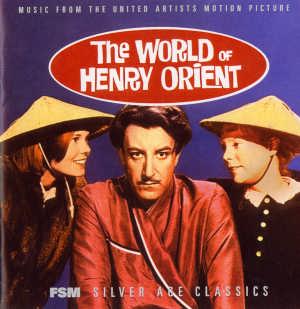
Nora Johnson’s 1958 classic, The World of Henry Orient, is a charming comedy of the kind often rediscovered by NYRB, Overlook Books, Virago, or The Bloomsbury Group. The good news: it’s in print, reissued by Green Mansions Press. More good news: the Peter Sellers movie, co-written by Johnson with her father, Nunnally Johnson, is available from Netflix. The bad news: the novel is now billed as YA, which severely limits the audience.
The World of Henry Orient surely isn't meant to be just a YA novel: its quirky characters, situation, and wryly humorous narration are designed to appeal to adults more than to children. Johnson chronicles the rebellion of two nonconformist 13-year-old girls at a progressive girls’ school in Manhattan, where “the 8s” (eighth graders) are obsessed with a meaningless, sadistic game called Prison Ball, which involves hitting people hard with a ball and then sending them to “prison.”
The Norton School, and even Prison Ball, is a microcosm of upper-class society. The wide range of eccentric characters include: Marian, the deadpan narrator, who “suffered through each day (at school) like a prisoner filling out a jail sentence” and lives in an unfashionable neighborhood with her laid-back pre-hippie-era divorced mother and their housemate, Boothy, a wisecracking divorcee. Life changes for Marian after she meets “the utterly unpredictable” Val, a piano-playing genius abandoned by her rich parents, who rooms with an abstract sculptor and his wife, Emma, who loves Val, tolerates her mood swings, and reads Freud and Adler to understand her.
Val is an impish extrovert who daily sees a psychiatrist, Dr. Braintree: whether or not she needs one is a source of controversy at the heart of the novel. Val’s exuberant humor and imagination bring the friendless Marian out of her shell. Soon they are exploring parts of New York Marian has never dreamed of.
We had nothing to do with the rest of the Norton girls, nor they with us. Their week end adventures paled beside ours. All they had done was to go to a dance with burping Trinity boys, while we had made friends with a tramp in Morningside Park who turned out to be a frustrated oboe player, had tea with two pansy friends of Val’s who ran a lampshade shop, seen a Chinese movie on the Bowery, taught a group of children in a playground to play prison ball, or spent an afternoon in one of the booths t Liberty’s playing records, aided by the obliging salesman. The city turned out to have unheard-of depths, and we plumbed all that our age and circumstances permitted.

Eventually they embark on their most daring adventure: after Val falls madly in love with the pianist Henry Orient, she and Marion stalk him (in an innocent teenage kind of way), cut out magazine and newspaper reviews and gossip about him, memorize data, and know where he will be every minute of the day. The crisis occurs when Val’s mother moves into a fancy hotel for a month and encourages her daughter to become a deb. As Val loses her spark and begins to conform/"grow up,” Marian desperately creates a last adventure centering on Henry Orient.
The Freudian Dr. Braintree, Val's mother's staunch ally, is the enemy: her idea of adjustment conflicts with Val's genius. Marian's creative mother and Boothy understand what is happening, and explain to Marian that you can't help anyone else.
And we sense that Marian has no choice but to change, too.
Really a good book! And I have another of Johnson's novels to read.
2 comments:
It does sound lively and interesting -- like the author of I Capture the Castle.
The YA trademark has its good and bad sides.
Ellen
I very much enjoyed this. It's a little like a women's Catcher in the Rye.
Post a Comment